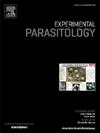Stabilization and characterization of Phyllanthus acidus L. leaf synthesized metal nanoparticles and their comparative efficacy as larvicides against three vector mosquitoes
IF 1.4
4区 医学
Q3 PARASITOLOGY
引用次数: 0
Abstract
The recurring global outbreaks of mosquito-borne diseases and the lack of vaccines, and preventive therapeutic approaches to combat diseases coupled with insecticide resistance, eventually emphasize the necessity of developing biological system-focused mosquito control strategies. In the present study, aqueous leaf extract from the Phyllanthus acidus L. plant was used to synthesize the metal nanoparticles (MNPs) such as silver, copper oxide, iron oxide, and zinc oxide, characterization has been carried out and their efficacies were also tested against the early 3rd instar larvae of the major mosquito vectors. According to analytical characterization, the silver (Ag), copper (CuO), iron (FeO), and zinc (ZnO) NPs had face-centered cubic crystallites with average sizes of 50, 52.33, 40.56, and 79.45nm, respectively. The agglomerated and clustered surface shape of MNPs was confirmed by FE-SEM analysis, and EDX tests were used to determine the fundamental composition of each particle. When exposed to 1, 5, 10, 15, and 20 ppm of metal nanoparticles, the larvicidal activity of silver nanoparticles was found to be superior to that of other nanoparticles demonstrating efficacy in the following order: silver > iron > copper > zinc against the larvae of filarial vector Culex quinquefasciatus, Japanese encephalitis vector Culex vishnui and dengue vector Aedes albopictus. After 72 h of exposure, the AgNPs had very little detrimental impact on the non-targeted organisms (Chironomus sp. larvae), causing 3.33 % of deaths. The exposure of MNPs to control larval body homogenates resulted in a considerable decrease in the key esterase enzymes, namely acetylcholinesterase, α-and β-carboxyl esterase, and GST enzymes. According to the present results, MNPs made from P. acidus leaf extracts have a strong enough negative effect to reduce the prevalence of vector mosquitoes.

叶绿合成金属纳米颗粒的稳定性、特性及对三种媒介蚊的杀幼虫效果比较
蚊子传播的疾病在全球范围内反复爆发,缺乏疫苗,以及防治疾病的预防性治疗方法,加上杀虫剂耐药性,最终强调了制定以生物系统为重点的蚊子控制战略的必要性。本研究以叶提取物为原料,合成了氧化银、铜、铁、氧化锌等金属纳米粒子(MNPs),对其进行了表征,并对主要媒介蚊的3龄早期幼虫进行了防效试验。分析表征表明,银(Ag)、铜(CuO)、铁(FeO)和锌(ZnO)纳米粒子具有面心立方晶,平均尺寸分别为50、52.33、40.56和79.45 nm。通过FE-SEM分析确定了MNPs的团聚和簇状表面形状,并用EDX测试确定了每个颗粒的基本组成。当暴露于1、5、10、15和20 ppm的金属纳米颗粒时,发现银纳米颗粒的杀幼虫活性优于其他纳米颗粒,其对致蚊库蚊幼虫的杀灭效果依次为银b>铁b>铜>锌,对日本脑炎病媒vishnui库蚊和登革热病媒白纹伊蚊的杀灭效果依次为银b>铁>铜>锌。暴露72小时后,AgNPs对非靶生物(Chironomussp.)的有害影响很小。幼虫),造成3.33%的死亡。MNPs暴露于幼虫体均质液中,导致关键酯酶,即乙酰胆碱酯酶、α和β-羧基酯酶和GST酶显著降低。从目前的结果来看,酸枣叶提取物制备的MNPs具有足够强的负作用,可以降低病媒蚊的流行。
本文章由计算机程序翻译,如有差异,请以英文原文为准。
求助全文
约1分钟内获得全文
求助全文
来源期刊

Experimental parasitology
医学-寄生虫学
CiteScore
3.10
自引率
4.80%
发文量
160
审稿时长
3 months
期刊介绍:
Experimental Parasitology emphasizes modern approaches to parasitology, including molecular biology and immunology. The journal features original research papers on the physiological, metabolic, immunologic, biochemical, nutritional, and chemotherapeutic aspects of parasites and host-parasite relationships.
 求助内容:
求助内容: 应助结果提醒方式:
应助结果提醒方式:


